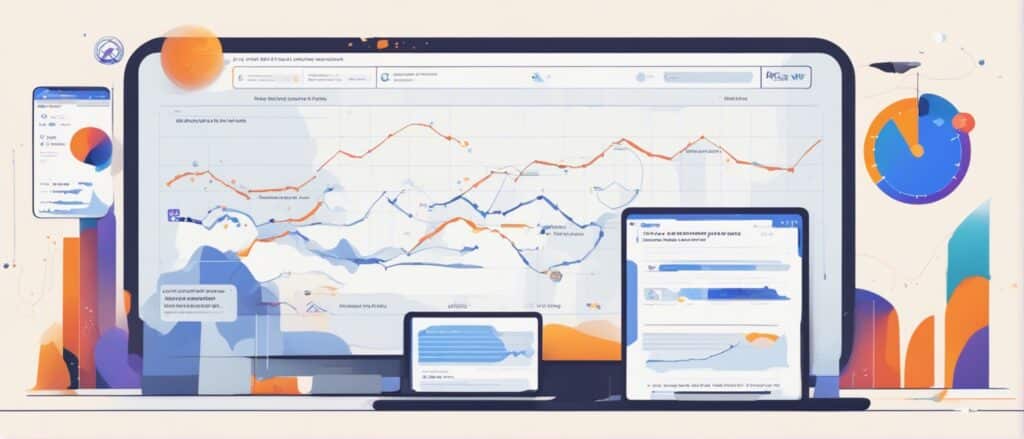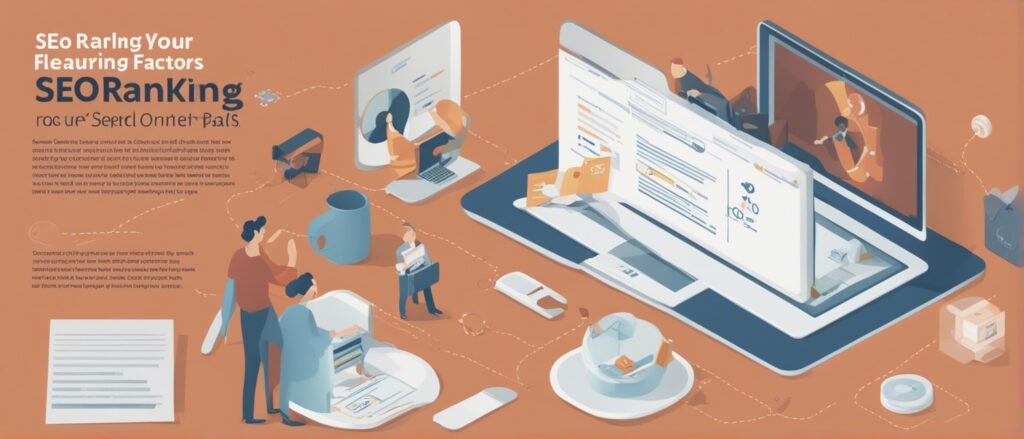Why are Core Web Vitals important?
Hello, dear readers! Do you remember the time when this happened? Internet was so lame that you could easily make a coffee at the same time? Yes, those days are over. And do you know who makes it happen? Google, with its Core Web Vitals! But what exactly are these Core Web Vitals and how do they affect your Google ranking? We'll clarify that today. Put away the coffee because this information is hotter!
Personal anecdote about the importance of fast websites
I still remember my first steps in... Internet. Back when you still connected to the Internet with a modem and heard the characteristic sound of dialing in. Yes, those were the days! But you know what? Nobody wants to go back to those times. Today we expect websites to load quickly and be easy to use. And that's exactly where the Core Web Vitals come into play.
Presentation of Core Web Vitals as a ranking factor
The Core Web Vitals have been an official ranking factor for Google since June 2021. That means if your Website If you perform poorly in these metrics, you could fall in rankings. And of course nobody wants that, right? Read more here.
What are Core Web Vitals?

Now it's getting technical, ladies and gentlemen! Core Web Vitals are metrics that measure your user experience Website measure. Sounds complicated? But it is not. Basically it comes down to three things: How fast does the page load? How interactive is it? And how stable are the visual elements?
Definition and overview
Core Web Vitals are a set of three main metrics: Largest Contentful Paint (LCP), First Input Delay (FID) and Cumulative Layout Shift (CLS). These metrics provide insight into how user-friendly your Website at a hunt. Read more here.
The three main metrics: LCP, FID, CLS
- LCP (Largest Contentful Paint): Measures how long it takes to reach the largest Contents the page is loaded. Goal: Less than 2,5 seconds.
- FID (First Input Delay): Measures the time between a user's first interaction and their response Website thereon. Goal: Under 100 milliseconds.
- CLS (Cumulative Layout Shift): Measures the visual stability of the page. Goal: Score below 0,1.
How do you measure your Core Web Vitals?
Now that you know what Core Web Vitals are, you're probably wondering: »How do I measure these things?« Don't worry, it's easier than it sounds!
Tools and methods for measurement
There are numerous Tools, which can help you measure your Core Web Vitals. Google itself offers this PageSpeed Insights Tool an excellent opportunity. But also other tools like GTmetrix or WebPageTest are useful.
Difference between Lab Data and Field Data
When measuring Core Web Vitals, you will encounter two types of data: Lab Data and Field Data. Lab data are measurements carried out in a controlled environment. Field data, on the other hand, is real user data. Both are important, but field data gives you a more realistic insight into the user experience.
Impact on Google rankings
Now it's getting exciting! You're probably wondering how all of these technical details apply to your Google ranking impact, right?
Core Web Vitals as part of the page experience
Google has integrated these into the page experience signals. This means they are an important factor when it comes to how Google your website rated. A bad Performance can therefore have a negative impact on your ranking. Read more here.
Examples of ranking changes
Imagine your website loading slowly and users abandoning it. That will be Google dislike! In the worst case, this can lead to you losing some places in the Ranking lose. But don't worry, with the right optimizations you can still turn things around.
Tips & tricks for optimization

You now know what these metrics are and how they affect your ranking. Now is the time to take action. Here come some Tips and Tricksthat will help you optimize your website.
LCP: How to improve loading time?
- Optimize images: Use compressed images and the correct format to reduce loading time.
- Lazy Loading: Load images and Videos only when they are visible in the viewport.
- Server & Hosting-Optimization: A fast server can work wonders. Consider whether an upgrade makes sense.
FID: How do you make the site more interactive?
- Optimize JavaScript: Avoid large JavaScript libraries that can impact interactivity.
- Asynchronous loading processes: Load scripts asynchronous to increase interactivity.
- User experience at a glance: Make sure that buttons and Links are easily clickable.
CLS: How do you ensure visual stability?
- Fixed sizes for media elements: Assign fixed sizes for images and videos to avoid layout shifts.
- Preload fonts: By preloading fonts, you can prevent text from jumping while loading.
FAQ: Frequently asked questions
What are Core Web Vitals?
They are metrics that measure the user experience of a website. They include LCP, FID and CLS.
How do I measure my Core Web Vitals?
Tools like Google Insights PageSpeed or GTmetrix can help you with this.
Are Core Web Vitals a Google ranking factor?
Yes, they have been an official ranking factor since June 2021.
How do I improve my Core Web Vitals?
Optimize images, use lazy loading and pay attention to the interactivity of your website.
What is the difference between Lab Data and Field Data?
Lab data is measurements in a controlled environment, while field data is real user data.
Can poor performance in Core Web Vitals affect my ranking?
Yes, a bad one Performance can negatively affect your Google ranking.
Conclusion: The path to the perfect website
You almost did it! Now you know what Core Web Vitals are, how they are measured, and how to optimize your website. The next step? Let's do it! Optimize your website and watch how yours Google ranking increases.





